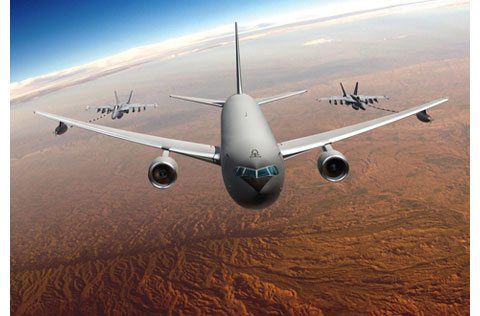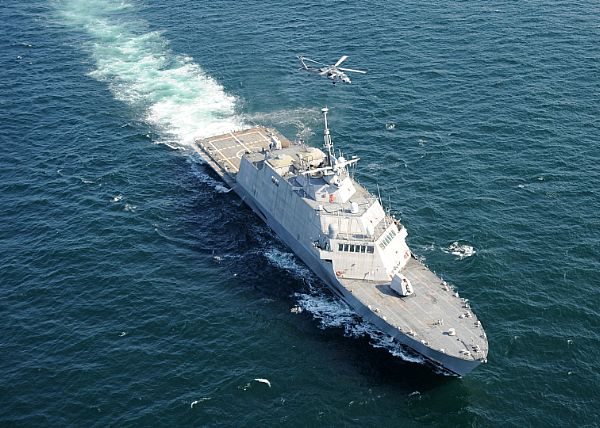The Air Force has increased planned life-cycle flying hours and aircrews assigned to the new KC-46A refueling tanker to make optimal use of the commercially-proven aircraft’s fuel efficiency, cargo and aeromedical evacuation capabilities.
Compared to the Eisenhower-era KC-135 Stratotanker, the KC-46 is projected to have improved fuel efficiency, a greater fuel capacity, and much more cargo, passenger and aero-medical capability, said Maj. Gen. John Thompson, the Tanker Program executive officer and KC-46 program director.
The new aircraft is a derivative of the Boeing 767 and commercial-derivatives are typically more dependable and less expensive to maintain than military-only aircraft.
Air Force leaders re-evaluated previous usage estimates, based on KC-135 averages, and decided these changes were appropriate to better utilize the full potential of the KC-46.
They decided an increase of 2.5 to 3.5 aircrews assigned per KC-46 was necessary to facilitate surge capabilities and to meet contingency operations requirements per the 2012 Defense Strategy. Overall, the increase will add approximately 60 total aircrews to the force and allow the Air Force to fly more missions using the KC-46.
Decisions also include the basing strategy of the KC-46 with an increased focus on “total force associations.” Basically, active-duty and reserve units will share aircraft allowing the KC-46 utilization rates to be much higher than current KC-135 rates.
Air Force leaders informed Congress of the increased flying hours due to the basing strategy and concept of operations changes along with the anticipated 11.2 percent future cost growth in the estimated operations and support costs due to increased usage.
The KC-46A is the service’s first step to replace its aging air refueling fleet. It will provide enhanced refueling capability and increased cargo and aero-medical evacuation capacity. The first 18 aircraft are slated to be delivered by August 2017.
The total operations and support costs are now predicted to be approximately $103 billion, but there is no increase in acquisition cost. Leaders stress the increase to operations and support is because this aircraft will be used more often and more effectively than current aircraft – not because it’s more expensive to operate.
“It’s completely a result of the basing and (concept of operations) changes and is in no way reflecting increased costs to operate the aircraft. We’re just flying it more,” Thompson said.
The Air Force is not planning to increase its budget, he said. “The increased KC-46 costs will be repurposed out of manpower and resources that were meant for the KC-135 Stratotanker.”











